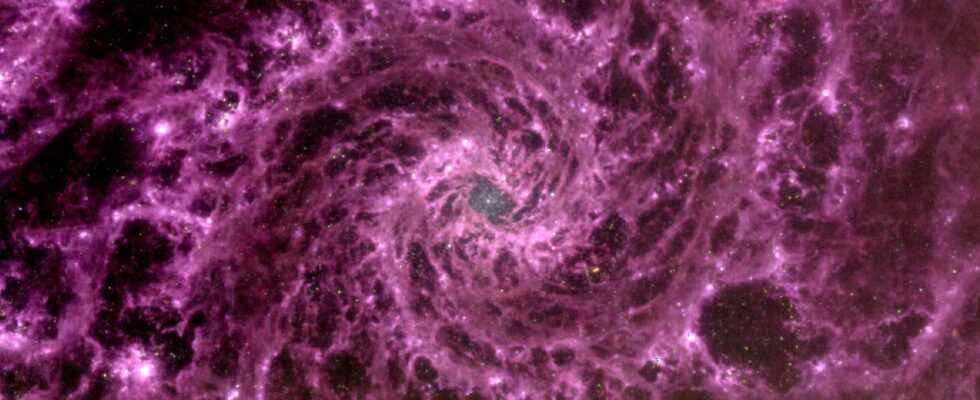Since the first images last week, the James Webb Telescope continues to transmit its photographs. However, on this large device weighing more than 6 tons, the data passes through a hard disk of… 68 GB.
Barely enough to hold more than a day’s worth of readings. But everything is calculated, and in reality, it is already a lot!
Out of memory, do you want to delete photos?
If all goes well, it is on this hard disk that the photographs will pass which will perhaps revolutionize astrophysics. ” Each image is a new discovery, and each offers humanity a never-before-seen perspective on our Universe. “, recalled NASA administrator Bill Nelson on July 13, on the occasion of the presentation of the first scientific images.
Since then, the source has not dried up, and the scientific teams are already preparing other fascinating publications. But all this is possible thanks to a memory of only… 68 GB. Which may seem ridiculous, because our PCs, tablets, and even many smartphones have capacities that greatly exceed the storage of the JWST!
Continuous transfers
The James Webb Telescope can produce and store up to 58.8 GB of data every day, an absolutely huge leap from Hubble’s 2 GB of data capacity, or the Curiosity rover’s hard drive of the same size.
In the fastest acquisition modes, the JWST can even fill its hard disk in just 120 minutes… Which then forces the teams to quickly download this data so as not to saturate the telescope’s memory.
But do not panic: the James Webb sends its packets of readings in Ka band from the Lagrange point L2 (1.5 million kilometers from Earth) in two periods of 4 hours of transmission each day. And the advantage of his position also lies in the constancy of pointing necessary to exchange data with him. His observations, planned well in advance, spend only a few hours in memory before being downloaded!
Enough to dream without worrying
Don’t worry then, everything is planned so that this storage, shielded and amply sufficient, can survive 20 years of long-distance operation. And if you’re wondering why there isn’t more headroom, you have to remember that 68 GB is still huge for a space vehicle today, even though the James Webb telescope was designed there. nearly 20 years ago.
The images are therefore well protected, and will spend much more time on the servers of NASA and the Space Telescope Science Institute, which receive them, distribute them to the scientists concerned and process them for their presentation to the public. Something to enjoy!
Source : Tom’s Hardware

25